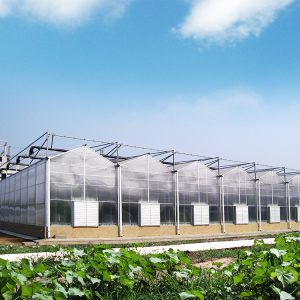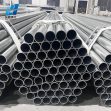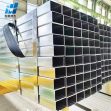steel opportunities from “New infrastructure”
The reason why “new infrastructure” is called “new” is that compared with the traditional infrastructure such as “railway engine”, it mainly serves the infrastructure of science and technology. Agriculture greenhouse is also developing. The comparable historical project for “new infrastructure” is the “national information highway” proposed by then-president Bill Clinton in 1993, which involves large-scale infrastructure construction in the information field. The program had a huge impact around the world, and made the future of America’s information economy possible.
 In the era of industrial economy, infrastructure construction is embodied in promoting the flow of physical resources and the integration of supply chains. In the era of digital economy, mobile communication, big data, artificial intelligence and other network equipment and facilities and data center facilities have become necessary and common infrastructure. The “new infrastructure” proposed this time has a richer connotation and serves a more diverse audience. For example, 5G is for mobile communication, ultra-high voltage is for electricity, intercity high-speed railway and intercity rail transit are for transportation, big data centers are for the Internet and digitalization, and artificial intelligence and industrial Internet is a rich and diverse field. The seven areas of “new infrastructure” are set to be digital economy and smart economy. The steel industry such as solar greenhouse will benefit from the new momentum and potential energy provided by “new infrastructure” and will evolve to a higher level. At the same time, it will also provide necessary basic materials for “new infrastructure”.
In the era of industrial economy, infrastructure construction is embodied in promoting the flow of physical resources and the integration of supply chains. In the era of digital economy, mobile communication, big data, artificial intelligence and other network equipment and facilities and data center facilities have become necessary and common infrastructure. The “new infrastructure” proposed this time has a richer connotation and serves a more diverse audience. For example, 5G is for mobile communication, ultra-high voltage is for electricity, intercity high-speed railway and intercity rail transit are for transportation, big data centers are for the Internet and digitalization, and artificial intelligence and industrial Internet is a rich and diverse field. The seven areas of “new infrastructure” are set to be digital economy and smart economy. The steel industry such as solar greenhouse will benefit from the new momentum and potential energy provided by “new infrastructure” and will evolve to a higher level. At the same time, it will also provide necessary basic materials for “new infrastructure”.
According to China’s 13th five-year plan for railways, the total length of high-speed railways in operation will reach 30,000 kilometers by 2020. By 2019, the length of China’s high-speed railways in operation reached 35,000 kilometers, exceeding the target ahead of schedule. A backbone network of eight horizontal and eight vertical lines has basically taken shape. By 2020, China will have invested 800 billion yuan in railways and glass curtain wall systems, and 4,000 kilometers of new lines will be put into operation, including 2,000 kilometers of high-speed railways. The focus will be on strengthening weak links and encrypting networks, which will be roughly the same as the intensity of investment in 2019. The total investment in intercity rail transit and urban rail transit was 906.9 billion yuan, accounting for about 90%. The investment scale of 90% is just in the field with high steel density, and the number of 39 projects is far more than the sum of other fields. From the perspective of the flow of special debt in 2020, “new infrastructure” will account for about 24% of the total infrastructure construction including curtain wall. Rail transit will also be a major driving force, while 5G base stations and big data centers will not account for a large proportion.
Tel: +86 18202256900 Email: steel@fwssteel.com










